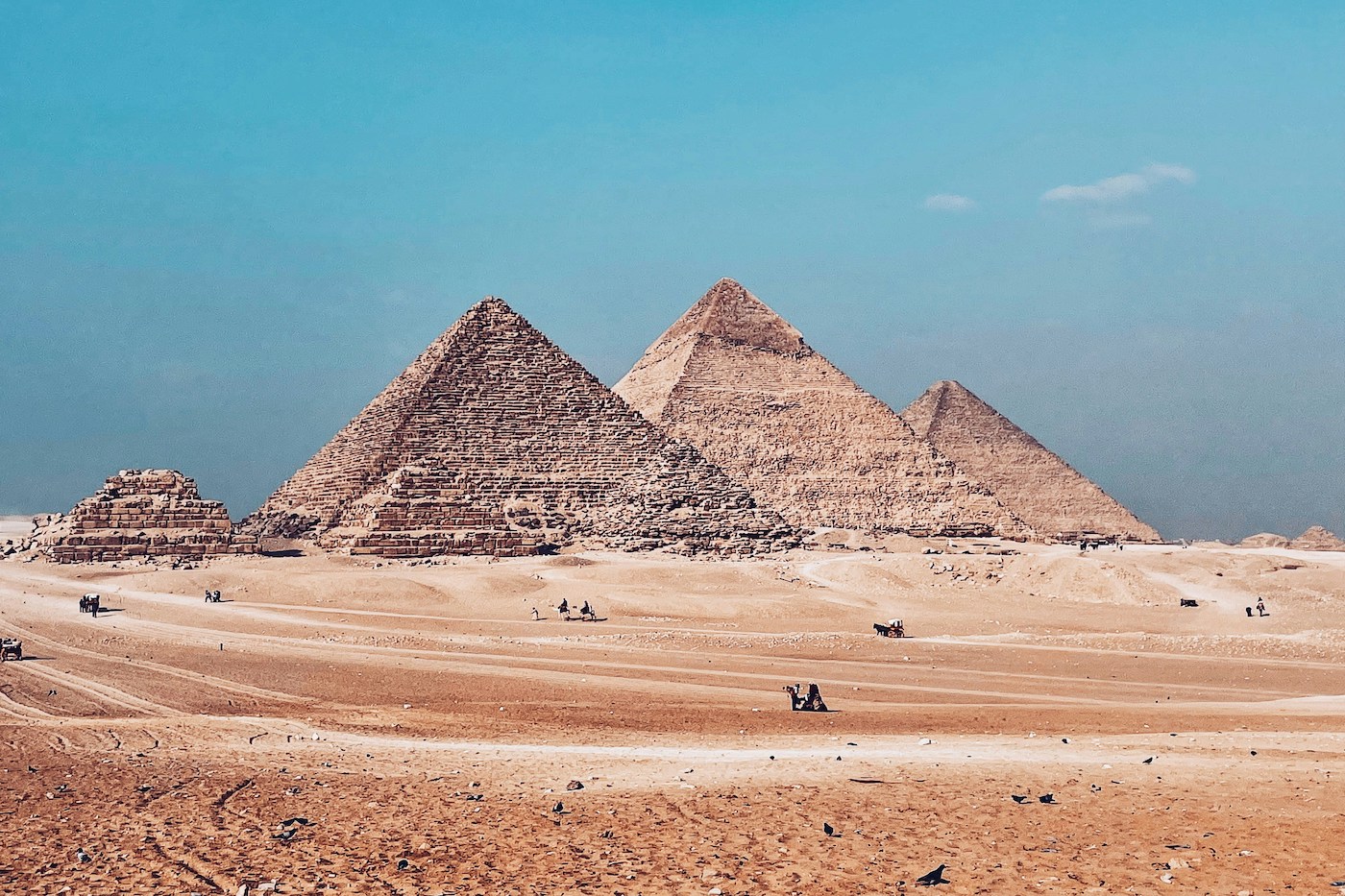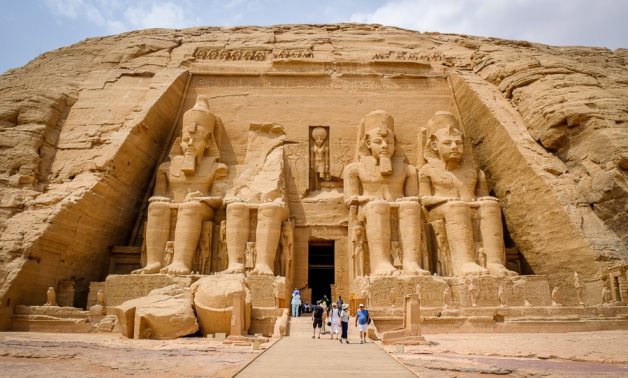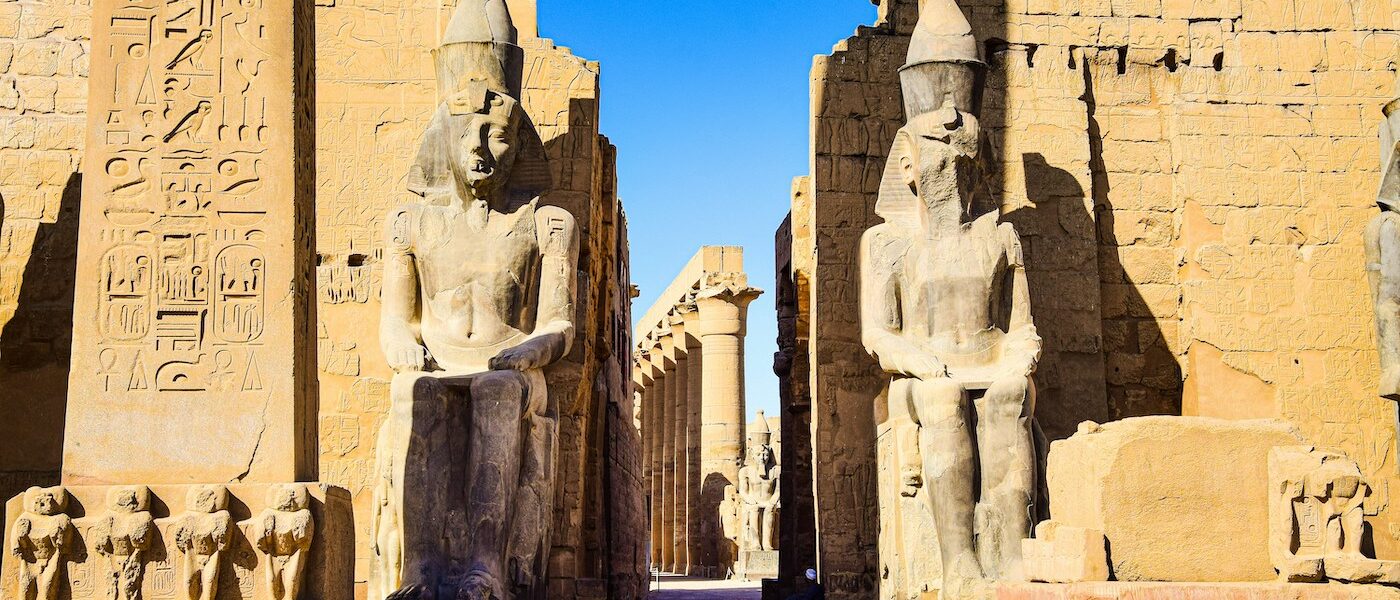Luxor Temple
Luxor Temple, located in the ancient city of Thebes, is a true testament to Egypt’s past splendor. Built nearly 3,500 years ago, this historic complex continues to amaze visitors with its grandeur and beauty. Located on the east bank of the Nile in southern Egypt, it embodies the magnificence of the New Kingdom era. Initiated during the reign of Amenhotep III and completed by Ramses II, the temple is a marvel of engineering and ancient art.
Luxor Temple wasn’t just completed at the time of its initial construction. Successive conquerors and pharaohs, including Alexander the Great, made continual modifications, adding layers of historical significance. Ancient Egyptian temples weren’t simply places of worship; they were considered homes of the gods, where the Egyptian population could perform rituals and seek divine blessings in peace. Luxor Temple, dedicated to Amun-Re, the king of the Egyptian gods, also served as a ceremonial site for the coronation and symbolic rebirth of pharaohs.
Historical Importance of Luxor Temple
Luxor Temple is distinguished not only by its architectural beauty but also by its historical significance. It represents the pinnacle of New Kingdom architecture and the religious and political dynamics of ancient Egypt. The temple’s construction, spanning several pharaohs’ reigns, symbolizes the continuity and stability of Egyptian civilization. Each pharaoh who contributed to the temple left his mark, blending his legacy with that of his predecessors.
The temple also serves as a historical witness to Egypt’s interactions with foreign powers. Modifications made by Alexander the Great and other conquerors illustrate the temple’s importance as a cultural and political symbol. Despite these changes, the heart of Luxor Temple remained a sacred space dedicated to Amun-Re and the pharaohs, reflecting the resilience and adaptability of Egyptian religious practices.
The significance of Luxor Temple also lies in its ability to tell the story of ancient Egypt through its inscriptions and reliefs. Each stone, each engraving, each sculpture is a fragment of history, offering valuable information about the lives, beliefs, and exploits of the ancient Egyptians. This temple is not just a monument; it is a living archive of Egyptian civilization.
Architectural Marvel of Luxor Temple
The Temple of Luxor is an architectural masterpiece that demonstrates the ingenuity and skill of ancient Egyptian builders. The temple’s layout, with its grand entrance pylons, vast courtyards, and imposing columns, exemplifies the grandeur of New Kingdom architecture. The use of massive blocks of sandstone, intricately carved with hieroglyphs and reliefs, demonstrates the meticulous craftsmanship and artistry of the time.
One of the most striking features of the Luxor Temple is the Avenue of Sphinxes that once connected it to the Temple of Karnak, another monumental complex in Thebes. This processional route, lined with hundreds of sphinx statues, emphasized the temple’s sanctity and its connection to the divine. The temple’s inner sanctuaries, where rituals took place, are adorned with detailed carvings depicting scenes of offerings, divine encounters, and the exploits of the pharaohs.
The architecture of Luxor Temple not only inspires awe; it also inspires deep respect for the ancient Egyptians who designed and built this monumental edifice. Every architectural element, from the arrangement of the pylons to the decoration of the columns, reflects a sophisticated understanding of form, function, and symbolism. Luxor Temple is truly a testament to the artistic and technical excellence of the ancient Egyptians.
Luxor Temple in the Modern Era
Today, Luxor Temple is a major tourist attraction, drawing visitors from around the world. Its well-preserved ruins offer a glimpse into the splendor of ancient Egypt, making it a must-see for history buffs and travelers alike. Modern tours, organized by companies such as Memphis Tours and Love Egypt Tours, offer in-depth explorations of the temple, allowing visitors to experience its historical and architectural magnificence firsthand.
Tourists can explore the temple by bicycle or bus, immersing themselves in its rich history and cultural significance. The site’s proximity to other historical monuments, such as the Temple of Karnak and the Valley of the Kings, enhances its appeal, making Luxor a center for archaeological and historical exploration. Ongoing conservation efforts ensure that Luxor Temple remains a testament to Egypt’s lasting legacy, preserving its beauty and significance for future generations.
Visiting Luxor Temple is not only a journey through time, but also an exploration of the cultural and spiritual heart of ancient Egypt. It stands as a testament to human ingenuity and devotion, a place where the divine and mortal worlds intersected. Walking through its grand colonnades and courtyards, you enter a living history, a legacy that continues to inspire and amaze.
Discovery of the Mysteries of the Temple of Luxor
The Temple of Luxor, with its many mysteries and secrets, continues to fascinate archaeologists and historians. Each excavation, each discovery adds a new layer of understanding to this already complex structure. For example, recent excavations have unearthed sections of the temple that had remained buried for centuries, revealing artifacts and inscriptions that enrich our knowledge of Egyptian history.
Researchers are also examining the construction techniques used by the ancient Egyptians to erect such monumental structures. Analyzing materials and construction methods provides insights into the skills and technologies available at the time. These studies not only reveal the technical prowess of ancient builders, but also shed light on the social and economic organization that made such projects possible.
Luxor Temple is also a place of spiritual discovery. The texts and reliefs carved into its walls contain prayers, hymns, and rituals that reveal the religious beliefs and practices of the ancient Egyptians. These inscriptions, often poetically beautiful, offer an intimate look at the spirituality and cosmology of the time, allowing modern visitors to connect in a profound way with the cultural heritage of ancient Egypt.
The Role of Luxor Temple in Religious Festivals
Luxor Temple played a central role in ancient Egyptian religious festivals, including the famous Opet, a festival celebrating fertility and regeneration. During this festival, statues of gods, including Amun-Re, were carried in a grand procession from the Temple of Karnak to the Temple of Luxor. This procession symbolized the renewal of the pharaoh’s divine strength and strengthened the bond between the king and the gods.
The Opet festivities were marked by grandiose ceremonies, dancing, singing, and offerings. The streets of Thebes filled with worshippers who came to witness this display of devotion and celebration. The Temple of Luxor, as the destination of the procession, became a focal point of religious activity and community, illustrating its spiritual importance in the lives of the ancient Egyptians.
The Opet Festival and other similar rituals demonstrate how the Luxor Temple served as a bridge between the mortal and divine worlds. These events strengthened social and political cohesion, highlighting the temple’s role not only as a place of worship but also as a vital community center. Today, modern reenactments and celebrations of these festivals allow visitors to relive some of this rich cultural tradition.
The Frescoes and Sculptures of the Temple of Luxor
The walls of Luxor Temple are adorned with frescoes and sculptures that tell epic stories of deities, pharaohs, and battles. These works of art are not just decorations, but visual narratives that convey myths, legends, and historical facts. Each image is rich in symbolism, offering a window into the spiritual and cultural world of the ancient Egyptians.
The scenes depicted include coronation ceremonies, religious processions, and offerings to the gods. The meticulous details of the figures’ clothing, jewelry, and facial expressions bring these images to life, allowing viewers to understand the practices and values of the time. The hieroglyphs that accompany these frescoes add an additional narrative dimension, explaining the events and characters depicted.
These works of art also demonstrate the technical mastery of Egyptian artists. The sculpting and painting techniques used to create these frescoes and reliefs were sophisticated and innovative for the time. The artists combined artisanal skills with a deep understanding of religious and royal symbolism, producing works that continue to inspire and amaze temple visitors today.
The Temple of Luxor and Other Monuments of Thebes
Luxor Temple is one of the many impressive monuments of Thebes, a city that was once the political and religious center of ancient Egypt. Nearby is the Temple of Karnak, an even larger and equally majestic complex. The two temples were connected by the Avenue of the Sphinxes, a processional route that added to the sacred significance of these sites.
The Temple of Karnak, dedicated to Amun-Re, is famous for its great hypostyle hall, a forest of giant columns adorned with hieroglyphs. This site, along with the Temple of Luxor, forms a powerful duo that exemplifies the grandeur and complexity of Egyptian religious architecture. Together, they offer a comprehensive view of ancient Egyptian religion, politics, and art.
Not far from these temples is the Valley of the Kings, where the pharaohs of the New Kingdom were buried in richly decorated tombs. The proximity of these sites demonstrates how Thebes was a center of power and spirituality. Modern visitors can explore these monuments to gain a deeper understanding of Egyptian civilization, with each site adding a piece to the historical puzzle.
The Conservation and Preservation of the Temple of Luxor
The conservation of Luxor Temple is a complex and ongoing task that involves the concerted efforts of many experts. Archaeologists, restorers, and historians work together to preserve this iconic monument for future generations. Conservation challenges include protection from erosion, tourist damage, and environmental impacts.
Modern conservation techniques use a combination of traditional and innovative methods. For example, laser scans and 3D models are used to document the temple’s current condition and plan precise restorations. Restoration materials must be carefully selected to match the original techniques and materials, ensuring that repairs are as authentic and durable as possible.
Conservation efforts are not limited to the physical aspects of the temple. It is also crucial to preserve and transmit the knowledge and history associated with the site. Educational programs and exhibitions allow visitors to understand the significance of the temple and the efforts made to preserve it. By raising public awareness, these initiatives help ensure that the Temple of Luxor continues to inspire and educate future generations.
Luxor Temple in Popular Culture
Luxor Temple has left an indelible mark on modern popular culture. It appears in numerous films, documentaries, and literary works celebrating the grandeur of ancient Egypt. From Hollywood blockbusters to historical novels, the temple is often used as a backdrop for stories of adventure, mystery, and discovery.
Media depictions of the Luxor Temple contribute to its global renown and attract new visitors eager to see this iconic site for themselves. Documentaries and television programs about ancient Egypt often feature segments on the temple, highlighting its architectural, historical, and artistic aspects. These educational productions help spread knowledge and spark interest in Egyptian history.
The popularity of Luxor Temple in modern culture underscores its status as a universal icon. It represents not only the grandeur of the past, but also the enduring fascination with the mysteries of ancient Egypt. Every year, thousands of visitors flock to explore its majestic ruins, taking with them memories and a richer understanding of this fascinating civilization.
An Unforgettable Exploration of Luxor Temple
Visiting Luxor Temple is an unforgettable experience that immerses visitors in the history and culture of ancient Egypt. This majestic monument, with its impressive architectural structures, detailed carvings, and rich historical past, offers a unique insight into the grandeur of ancient Egypt.
Every stone in the temple tells a story, every sculpture reveals a fragment of ancient life, every relief reveals a ritual or myth. Walking through the courtyards and colonnades of Luxor Temple, visitors don’t just see an ancient monument; they relive history, experience spirituality, and understand the complexity of Egyptian civilization.
Luxor Temple continues to inspire and amaze, remaining a testament to human ingenuity and devotion. It is a place where the past comes alive, where gods and pharaohs seem still present, and where visitors can connect deeply with Egypt’s cultural heritage. A visit to Luxor Temple is truly an exploration of the splendor and mysteries of ancient Egypt.







